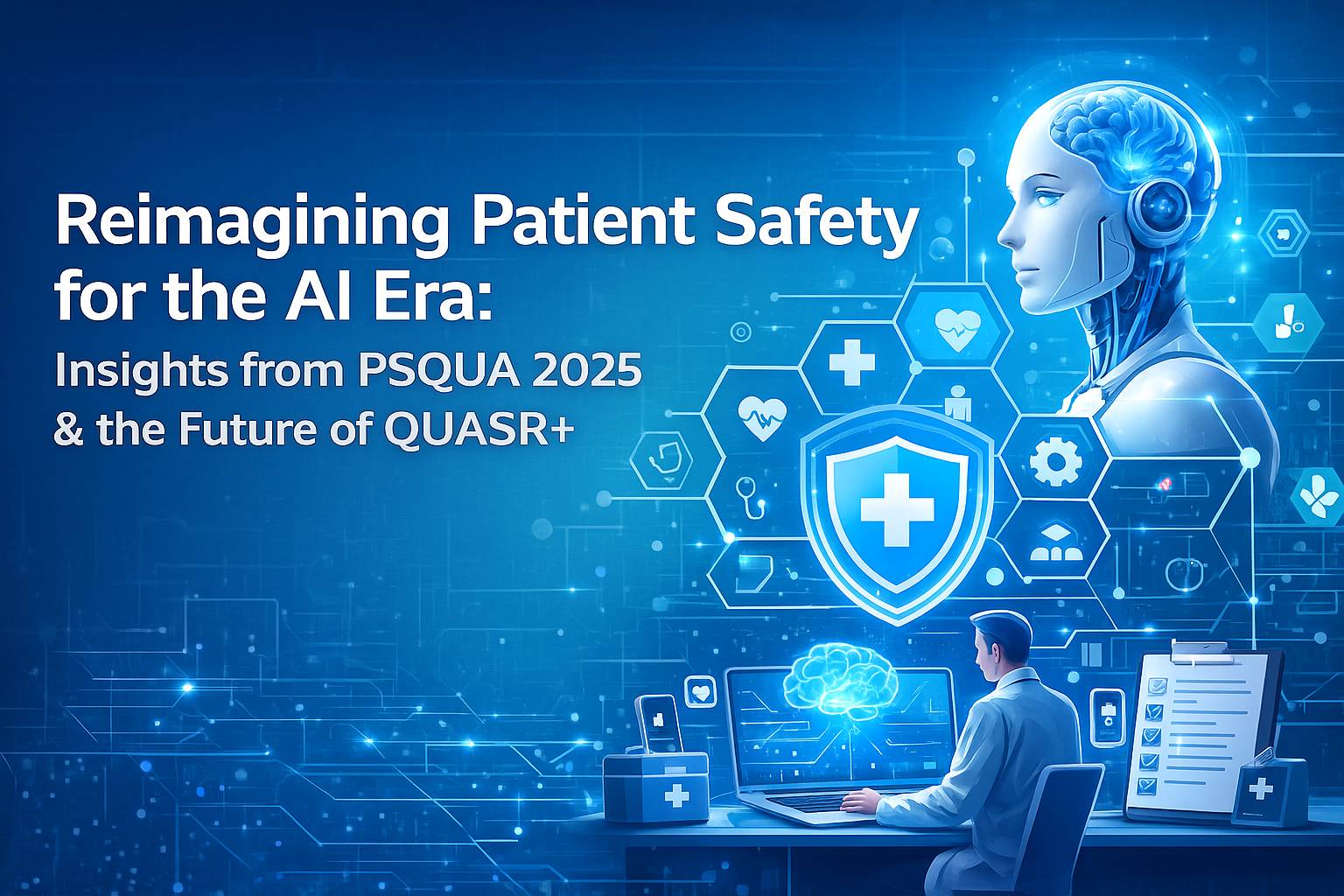
Have you ever wondered why, despite all the policies, technology, and training, serious safety issues in hospitals still slip through the cracks? Why do some incidents get reported immediately, while others vanish into the background until they cause bigger problems? Despite policies, technology, and training, serious safety issues still slip through the cracks in hospitals. Some incidents get reported instantly while others disappear until they cause bigger problems. The root cause? Many healthcare incident reporting systems are ineffective and harder to use than they should be.
For many healthcare leaders, incident reporting feels like an administrative checkbox rather than a vital patient safety tool. Staff often view it as extra paperwork, managers struggle to make sense of inconsistent reports, and executives are left with incomplete data to guide safety improvements. This fragmented approach to incident management doesn’t just create an administrative burden, it directly impacts patient safety, staff morale and the organization’s reputation.
Table of Contents
The Culture of Silence and Fear
One of the most persistent problems is cultural. In too many healthcare environments, reporting an incident feels risky. Staff fear blame, punishment or damage to their professional reputation. Even in organizations that promise a “just culture,” lingering perceptions of finger-pointing discourage honest reporting. When people stay silent to protect themselves, valuable opportunities to learn and improve are lost.
Complex, Time-Consuming Processes
Even the most dedicated nurse or doctor is less likely to report an incident if the process is slow, confusing, or repetitive. In a recent case, a near-miss involving a medication error was filed manually. By the time the report reached the quality team for review, a full three weeks had passed, and the opportunity for immediate intervention was lost. Many hospitals still rely on outdated paper forms or clunky software that demands multiple logins, endless dropdowns, and unclear categories. In a busy shift, every extra minute matters. Faced with these barriers, some staff choose not to report at all or provide only partial information, which undermines the usefulness of the data.
Data Without Action
Collecting reports is only the first step; what happens next is just as important. Too often, incident data sits in silos, buried in spreadsheets or scattered across different systems. Without proper analysis, patterns go unnoticed. Without timely feedback, frontline staff see no results from their efforts and quickly lose motivation to keep reporting. This lack of follow-through transforms a potentially powerful safety mechanism into a passive record-keeping exercise.
Missed Opportunities for Proactive Prevention
When incident reporting systems fail to integrate with broader quality and risk management processes, organizations end up stuck in a reactive mode. They respond to events after they occur instead of preventing them in the first place. Modern healthcare demands predictive insights and the ability to spot trends early and act before harm happens. But outdated hospital safety reporting systems simply aren’t built for that.
The Technology Gap
Healthcare has made impressive strides in adopting electronic health records, telemedicine, and AI-driven diagnostics. Incident reporting has improved over time, yet gaps in speed, usability, and integration reveal clear opportunities for smarter, technology-driven solutions. The reliance on manual processes, rigid forms, and fragmented tools means many organizations miss out on real-time data capture, automated analysis and cross-department visibility. In an industry where innovation drives real-time patient care, it’s a critical challenge that safety reporting processes often lag behind, delaying crucial insights.
“I have to log in to three different systems to file a single incident report. By the time I’m done, my shift is over.” — Nurse manager, Midwest hospital
Building the Next Generation of Incident Reporting Management System
Fixing this broken system requires more than swapping paper for software. It’s about redesigning the entire process to be fast, intuitive, and non-punitive. That means creating systems that:
- Make reporting as quick as sending a message.
- Automatically analyse trends and flag risks in real time.
- Integrate seamlessly with other hospital systems.
- Provide visible feedback loops so staff see the impact of their reports.
- Foster a proactive patient safety culture where reporting is seen as a mark of professionalism, not a sign of failure.
The best systems today use AI to help classify incidents, suggest preventive measures, and generate actionable dashboards for decision-makers. By doing so, they turn every report into a learning opportunity and a step toward safer care.
The Way Forward for Healthcare Leaders
Healthcare administrators, safety officers, and executives have a critical decision to make: keep tolerating the inefficiencies of traditional reporting, or lead the shift toward a smarter, more connected approach. The latter isn’t just about compliance it’s about safeguarding patients, protecting staff, and building a culture of transparency and trust.
Incident reporting doesn’t have to be broken. With the right technology, the right culture, and the right leadership, it can become one of the most powerful tools in healthcare’s safety arsenal. The challenge and the opportunity lie in making that transformation happen now, before the next preventable incident becomes another headline.
Incident reporting in healthcare is a crucial safety tool. But in practice it often falls short of its intended purpose of improving safety and preventing harm due to a mix of cultural, structural, and process-related challenges.
Top Challenges in Hospital Incident Reporting and How to Solve Them
| Challenge | Impact | How to Fix |
|---|---|---|
| 1. Underreporting by Staff |
|
|
| 2. Time-Consuming & Complex Process |
|
|
| 3. Poor Feedback Loops |
|
|
| 4. Inconsistent Definitions |
|
|
| 5. Lack of Data Analysis & Learning |
|
|
| 6. Cultural Barriers |
|
|
| 7. Overemphasis on Compliance |
|
|
The future of patient safety isn’t about simply collecting more data; it’s about building intelligent, human-centred systems that transform that data into a culture of prevention. By embracing these changes, we can turn every incident report into a stepping stone toward a safer, more resilient healthcare environment for everyone.






